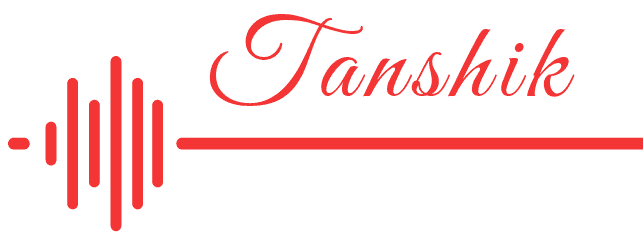Introduction
Personal finance is an essential skill that impacts every aspect of your life. Whether you’re saving for a big purchase, planning for retirement, or managing daily expenses, understanding how to manage your money is crucial. This comprehensive guide will introduce you to the basics of personal finance, offering valuable insights, practical tips, and the latest trends to help you navigate your financial journey. Let’s dive in and make personal finance both informative and fun!
Disclaimer
The information provided in this article is for educational and informational purposes only and should not be construed as financial advice. I am not a financial advisor. Please consult with a certified financial professional before making any financial decisions.
Section 1: The Fundamentals of Personal Finance
Understanding Income and Expenses
The first step in personal finance is understanding your income and expenses. This knowledge forms the foundation of your financial planning.
• Income: Your income includes all the money you earn from various sources, such as salaries, bonuses, investments, and side gigs. Knowing your total income helps you create a realistic budget and set achievable financial goals.
• Expenses: Your expenses are all the money you spend, from essential costs like rent and groceries to discretionary spending like dining out and entertainment. Tracking your expenses allows you to see where your money goes and identify areas where you can cut back if needed.
Creating a Budget
Budgeting is a crucial aspect of personal finance. It helps you manage your money effectively and ensures you live within your means.
• Set Financial Goals: Start by setting short-term and long-term financial goals. Short-term goals might include saving for a vacation, while long-term goals could involve buying a home or retiring comfortably.
- Affiliate Link: Consider using a Budget Planner to organize your finances in style.
• Track Your Spending: Use tools like spreadsheets, budgeting apps, or even a simple notebook to track your daily expenses. Categorize your spending to see how much you allocate to different areas.
• Create a Budget Plan: Based on your income and expenses, create a budget that aligns with your financial goals. Allocate a specific amount for each category, ensuring you save a portion of your income.
You can find more information on creating a budget at NerdWallet’s Budgeting Guide.
Building an Emergency Fund
An emergency fund is a critical part of personal finance planning. It provides a safety net for unexpected expenses.
• Why You Need an Emergency Fund: Life is unpredictable, and emergencies can happen at any time. An emergency fund helps you cover unexpected costs, such as medical bills, car repairs, or job loss, without resorting to debt.
• How Much to Save: Aim to save at least three to six months’ worth of living expenses. Start small if needed, but make regular contributions to build your fund over time.
• Where to Keep Your Emergency Fund: Keep your emergency fund in a separate, easily accessible account, such as a high-yield savings account. This ensures you can quickly access the money when needed.
For more on emergency funds, check out The Balance’s Guide to Emergency Funds.
Section 2: Saving and Investing
The Importance of Saving
Saving is a fundamental part of personal finance. It helps you achieve your financial goals and provides financial security.
• Short-Term Savings: These are funds you save for goals you plan to achieve within a year, such as a vacation or a new gadget. Keep short-term savings in a safe, liquid account.
• Long-Term Savings: Long-term savings are for goals that are several years away, such as buying a house or retirement. These savings can be invested in accounts with higher returns.
Introduction to Investing
Investing allows your money to grow over time, helping you build wealth and achieve long-term financial goals.
• Types of Investments: Common investment options include stocks, bonds, mutual funds, and real estate. Each has its own risk and return profile, so it’s important to diversify your investments.
• Risk and Return: Investments come with varying levels of risk and potential return. Higher-risk investments usually offer higher returns, while lower-risk investments provide more stability but lower returns.
• Start Investing Early: The earlier you start investing, the more time your money has to grow through the power of compounding. Even small investments can grow significantly over time.
For beginners, Investopedia’s Guide to Investing is a great resource.
- Affiliate Link: If you’re new to investing, consider reading the Intelligent Investor by Benjamin Graham to get started.
Retirement Planning
Planning for retirement is crucial for ensuring you can maintain your lifestyle in your later years.
• Retirement Accounts: Common retirement accounts include 401(k) plans, IRAs, and Roth IRAs. These accounts offer tax advantages that help your money grow faster.
• Contribute Regularly: Make regular contributions to your retirement accounts. If your employer offers a 401(k) match, contribute enough to get the full match—it’s essentially free money.
• Assess Your Retirement Needs: Estimate how much money you will need in retirement based on your desired lifestyle and expected expenses. Adjust your savings and investment strategy accordingly.
For more detailed retirement planning, visit AARP’s Retirement Calculator.
Section 3: Managing Debt
Understanding Different Types of Debt
Not all debt is created equal. Understanding the different types of debt can help you manage them more effectively.
• Good Debt vs. Bad Debt: Good debt, such as a mortgage or student loan, is an investment in your future and can have a positive impact on your finances. Bad debt, like high-interest credit card debt, can be detrimental and should be avoided or paid off quickly.
- Affiliate Link: For help managing credit card debt, consider using the Debt Snowball Planner.
• Secured vs. Unsecured Debt: Secured debt is backed by collateral, such as a house or car, while unsecured debt is not. Secured debt often has lower interest rates but carries the risk of losing the collateral if you default.
Strategies for Paying Off Debt
Paying off debt is essential for financial health. Here are some strategies to help you become debt-free.
• Debt Snowball Method: This method involves paying off your smallest debts first while making minimum payments on larger debts. Once a small debt is paid off, move on to the next smallest. This can provide psychological motivation and a sense of accomplishment.
• Debt Avalanche Method: This approach focuses on paying off debts with the highest interest rates first while making minimum payments on others. This method can save you more money on interest in the long run.
- Affiliate Link: The Total Money Makeover by Dave Ramsey offers in-depth strategies for paying off debt effectively.
• Consolidation and Refinancing: Consolidating multiple debts into one loan with a lower interest rate or refinancing existing loans can simplify your payments and reduce interest costs.
Avoiding Debt Traps
Avoiding debt traps is crucial for maintaining financial stability. Here are some tips to help you stay out of debt.
• Live Within Your Means: Avoid spending more than you earn. Create and stick to a budget to ensure you live within your means.
• Build an Emergency Fund: Having an emergency fund can prevent you from relying on credit cards or loans in case of unexpected expenses.
• Use Credit Wisely: Only use credit when necessary and pay off your balance in full each month to avoid interest charges.
Section 4: Financial Planning and Goal Setting
Setting Financial Goals
Setting clear financial goals helps you stay focused and motivated on your financial journey.
• Short-Term Goals: As mentioned earlier, these are goals you plan to achieve within a year, such as saving for a vacation or paying off a small debt. Short-term goals keep you motivated and provide quick wins.
• Medium-Term Goals: Medium-term goals typically take one to five years to achieve, such as saving for a car or a down payment on a house. These goals require more planning and discipline.
• Long-Term Goals: Long-term goals are those that take more than five years to achieve, such as retirement savings or funding a child’s education. These goals require a strategic approach and consistent effort.
Creating a Financial Plan
A financial plan is a roadmap to achieve your financial goals. It helps you stay organized and focused.
• Assess Your Current Situation: Start by evaluating your current financial situation. List your assets, liabilities, income, and expenses.
• Set Clear Goals: Define your short-term, medium-term, and long-term goals. Make sure they are specific, measurable, achievable, relevant, and time-bound (SMART).
• Develop a Strategy: Create a plan to achieve your goals. This may include budgeting, saving, investing, and managing debt.
• Monitor and Adjust: Regularly review your financial plan and make adjustments as needed. Life changes, and so should your financial plan.
Staying Informed and Educated
Staying informed about financial matters is essential for making informed decisions and achieving your goals.
• Read Financial News: Keep up with the latest financial news and trends. This helps you stay aware of changes in the market and economy that could impact your finances.
Websites like CNBC and Bloomberg offer up-to-date financial news.
• Take Financial Courses: Consider taking financial literacy courses or attending workshops. Many organizations offer free or low-cost financial education resources.
The National Endowment for Financial Education provides a variety of educational tools and resources.
• Consult a Financial Advisor: If you need personalized advice, consider consulting a certified financial advisor. They can provide guidance tailored to your specific situation and goals.
For finding a trusted advisor, you can visit NAPFA’s Find an Advisor tool.
Conclusion
Personal finance is a vital skill that can significantly impact your life. By understanding the fundamentals, saving and investing wisely, managing debt, and setting clear financial goals, you can achieve financial success and security. Start today by taking small steps towards better money management, and you’ll be well on your way to a brighter financial future.
Affiliate Disclosure: This article contains affiliate links to products on Amazon. If you click on these links and make a purchase, I may earn a small commission at no additional cost to you. These commissions help support my work and allow me to continue providing valuable content. Thank you for your support!
References
• Whitebread, D., & Bingham, S. (2013). Habit Formation and Learning in Young Children. University of Cambridge.
• OECD. (2016). Financial Education in Schools. Organisation for Economic Co-operation and Development. http://www.oecd.org/financial/education/financial-education-in-schools.htm
• NerdWallet. (n.d.). How to Budget. https://www.nerdwallet.com/article/finance/how-to-budget
• Investopedia. (n.d.). Guide to Investing. https://www.investopedia.com/terms/i/investing.asp
• AARP. (n.d.). Retirement Calculator. https://www.aarp.org/work/retirement-planning/retirement_calculator.html
• Dave Ramsey. (n.d.). How the Debt Snowball Method Works. https://www.daveramsey.com/blog/how-the-debt-snowball-method-works
• National Endowment for Financial Education (NEFE). (n.d.). https://www.nefe.org/
• NAPFA. (n.d.). Find an Advisor. https://www.napfa.org/find-an-advisor
#Ad – Explore These Popular Items on Amazon
 ANRABESS Women Sherpa Fleece Sweatshirt Half Zip Pullover Casual Warm Fuzzy Sweater Coat 2024 Fall Fashion Outerwear
ANRABESS Women Sherpa Fleece Sweatshirt Half Zip Pullover Casual Warm Fuzzy Sweater Coat 2024 Fall Fashion Outerwear Apple AirPods 4 Wireless Earbuds, Bluetooth Headphones, with Active Noise Cancellation, Adaptive Audio, Transparency Mode, Personalized Spatial Audio, USB-C Charging Case with AppleCare+ (2 Years)
Apple AirPods 4 Wireless Earbuds, Bluetooth Headphones, with Active Noise Cancellation, Adaptive Audio, Transparency Mode, Personalized Spatial Audio, USB-C Charging Case with AppleCare+ (2 Years) XIEERDUO Long Puffer Vest Women Outerwear Reversible Fleece 2024 Fall Winter Warm Sleeveless Zip Up Hoodie Coat with Pockets
XIEERDUO Long Puffer Vest Women Outerwear Reversible Fleece 2024 Fall Winter Warm Sleeveless Zip Up Hoodie Coat with Pockets Infantino My 1st Tumbler – Adorable Miniature Tumbler with Toddler-Friendly Straw and Handle, Encourages Hydration, Easy to Clean, 9 fl. oz, Alpine
Infantino My 1st Tumbler – Adorable Miniature Tumbler with Toddler-Friendly Straw and Handle, Encourages Hydration, Easy to Clean, 9 fl. oz, Alpine Gacaky Women’s Lightweight Floral Embroidered Cropped Quilted Jacket Winter Warm Button Down Puffer Jacket Coat with Pockets
Gacaky Women’s Lightweight Floral Embroidered Cropped Quilted Jacket Winter Warm Button Down Puffer Jacket Coat with Pockets





3 thoughts on “Introduction to Personal Finance: Your Guide to Financial Success”